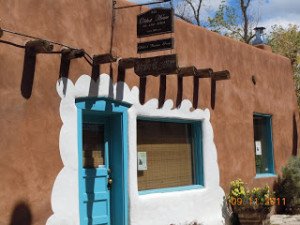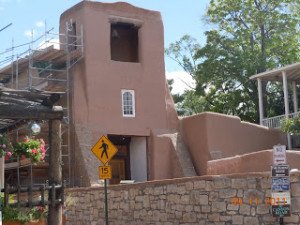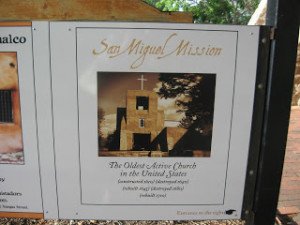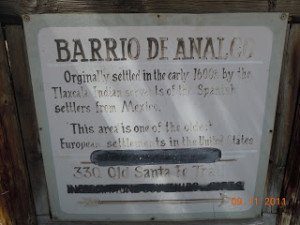Santa Fe New Mexico and America’s Oldest House
Thank you for reading this post, don't forget to subscribe!Santa Fe New Mexico was officially settled in the year 1610. Santa Fe served as the Spanish capital of Nuevo Mexico, the present day state of New Mexico.

When you visit Santa Fe be sure to take a short stroll up the Old Santa Fe Trail from the Plaza area to De Vargas Street. The adobe structure located just east of the Old Santa Fe Trail is recognized as the oldest house in the United States.
There is a bit of controversy regarding this distinguished title however the owners of the structure located at 215 East De Vargas Street are duly recognized by the city of Santa Fe. The structure was reportedly built in 1646 and has been standing on this site through Spanish, Mexican and United States rule. The other two structures in the United States which claim a similar title are the Gonzalez-Alvarez House in St. Augustine Florida and the Fairbanks House in Dedham Massachusetts.
It’s interesting visiting this house to understand how people lived in this part of North America during the 1600’s. You’ll see some unique artifacts and photos. The structure demonstrates authentic old adobe architecture which is much different than the new adobe structures you see today.

Barrio de Analco
San Miguel Chapel, often known as the oldest church in the country, is the key site of the Barrio de Analco National Historic Landmark District.
The Santa Fe neighborhood known as the Barrio de Analco which is centered around the San Miguel church, was established in the early seventeenth century.
The Barrio de Analco represented an active working class neighborhood of Spanish Colonial Heritage. The district contains numerous examples of Spanish-Pueblo architecture, characterized by the adobe construction indigenous to the Southwest.
The area where the oldest house is located is also one of the oldest neighborhood in Santa Fe, Barrio de Analco. Barrio de Analco is just south of the Santa Fe River and was established in about 1620.

Sunday mass is still held at the Chapel of San Miguel for those wishing for a full experience of the building’s past.
Also at 132 East De Vargas Street is the Gregorio Crespin House. Listed on the National Register of Historic Places. The Gregorio Crespin House was built in 1720 and is now used for various community events.

The barrio settled by Mexican Indians and as mentioned above is just south of the Santa Fe River and thus south of the Plaza area.The Mexican Indians came northward with the Conquistadors.
San Miguel mission was severely damaged during the Pueblo Revolt and was repaired and rebuilt during the early 1700’s.
The Barrio de Analco served as a buffer for any Pueblo Indian attack coming from the south. As it turned, the Pueblo Revolt of 1680 was successful from the Pueblo Indian standpoint. The Spaniards were driven out of Nuevo Mexico for some twelve years finally returning successfully in 1692.
You may also enjoy the Trips Into History articles on the links below…
A Very Unique New Mexico Spanish Mission Church
The Bering Land Bridge National Preserve / Worth the Visit
A very good book about old Santa Fe, it’s history and growth is Old Santa Fe by author James J. Raciti. You may also want to look for the book The Centuries of Santa Fe by author Paul Horgan.
A Santa Fe Visit Offers a Trip Back Into History
When you visit Santa Fe be certain to add the Barrio de Analco area and the Oldest House in America to your trip planner. It’s an opportunity to see the type of architecture during the very first years of Santa Fe’s existence. Be sure to take your camera along for some excellent pictures. The Barrio de Analco Historic District is a perfect embellishment to the history of Santa Fe.
(Article and photos copyright 2014 Trips Into History)
